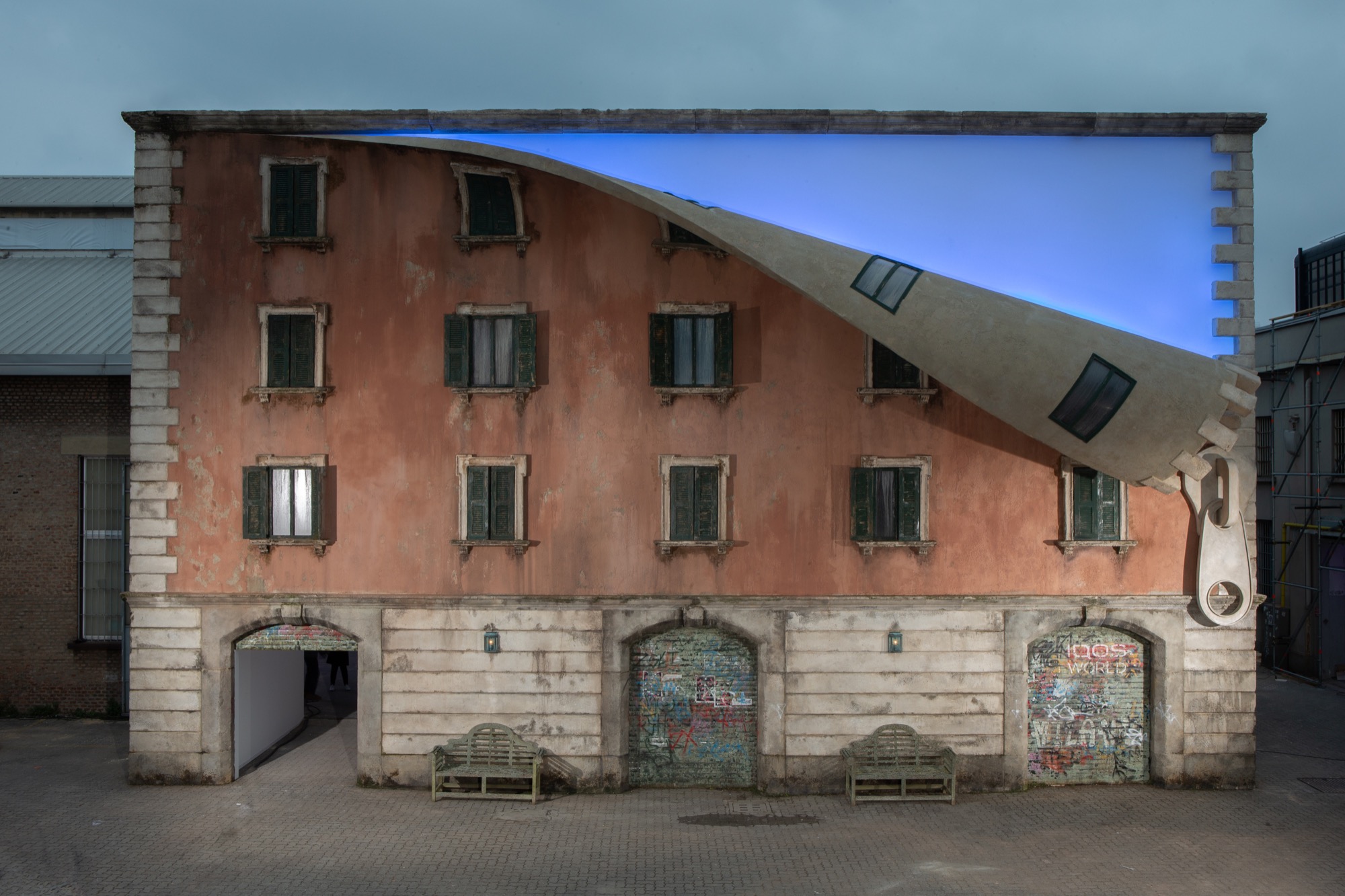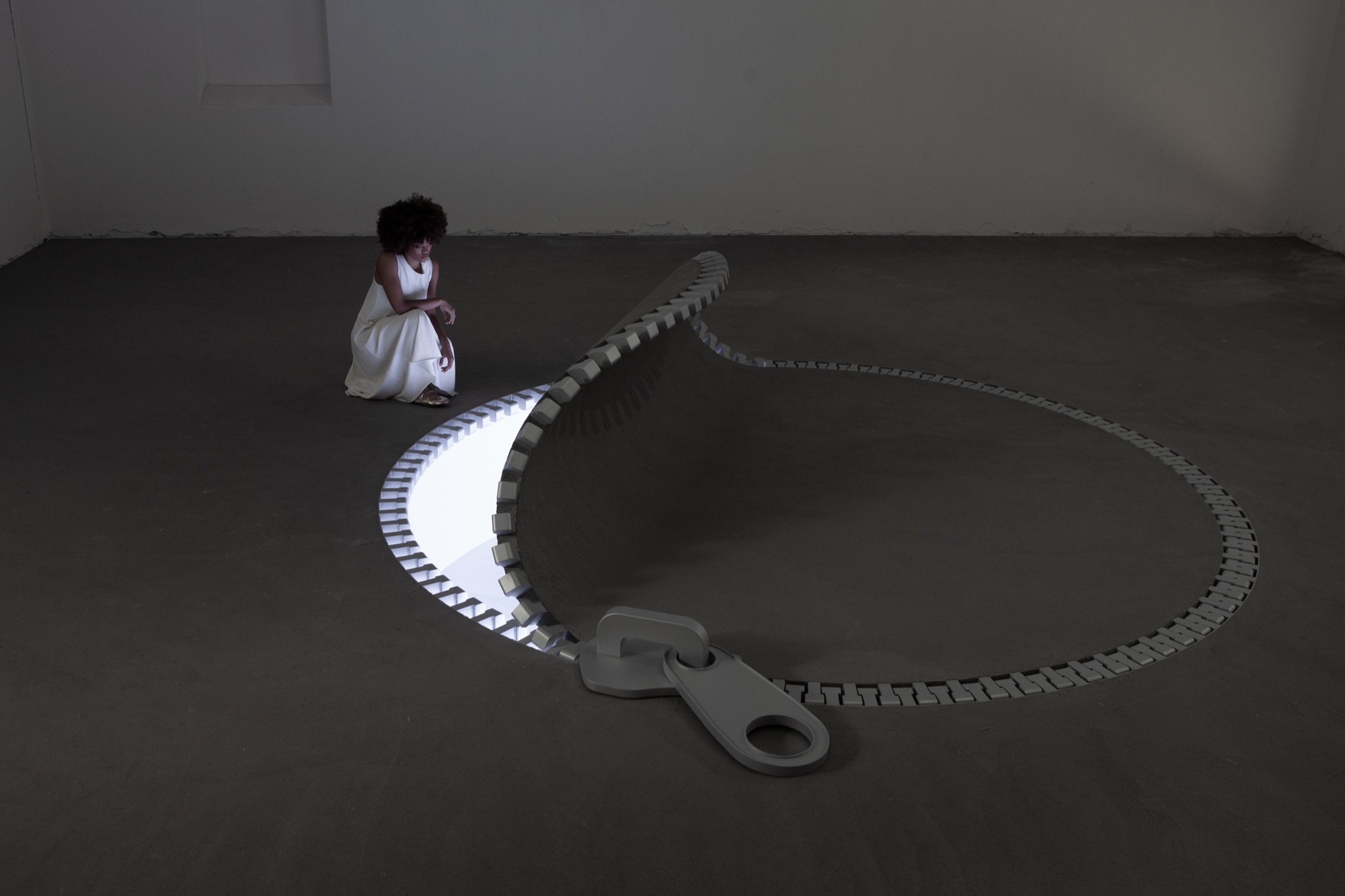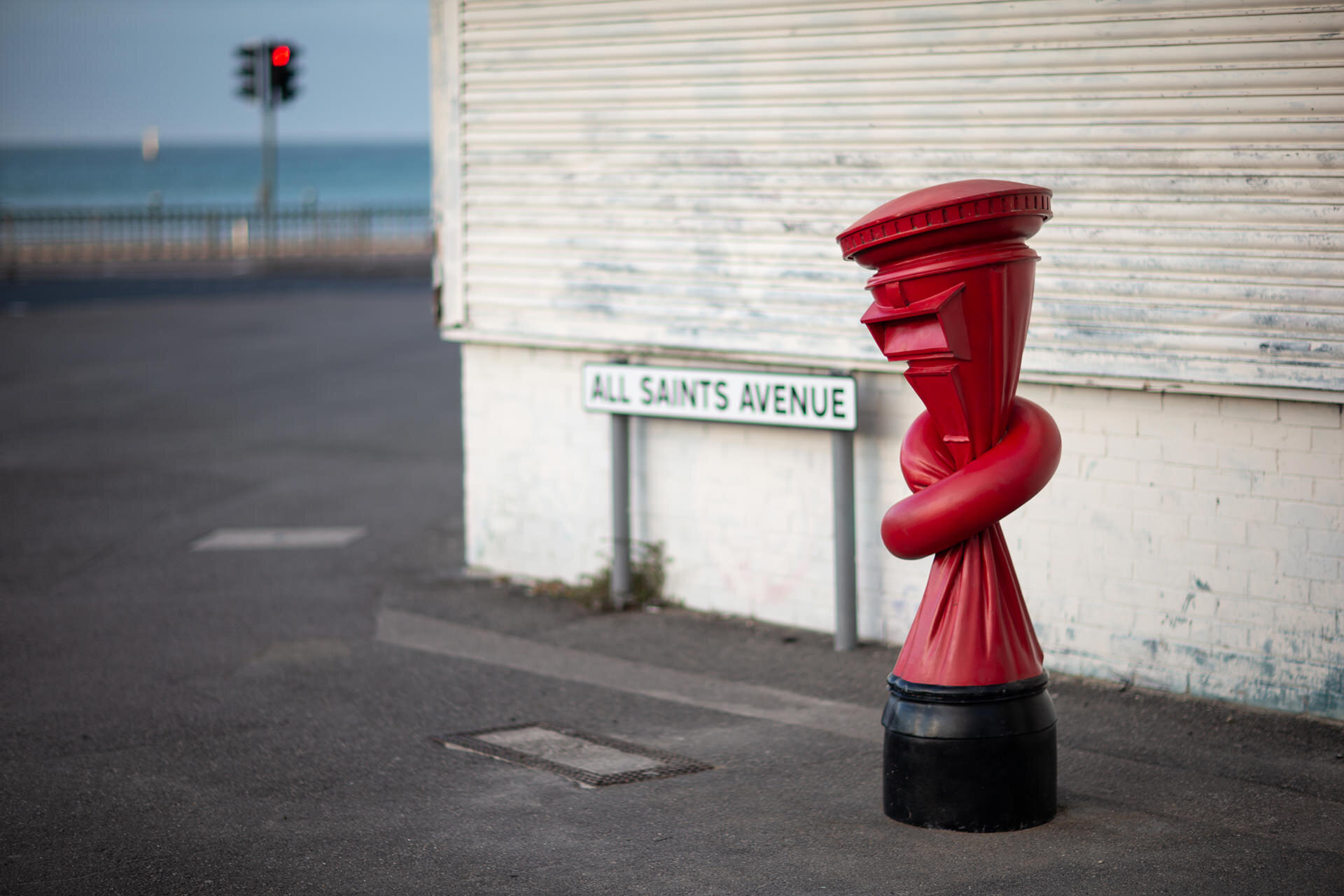
In a surprising fusion of art, architecture, theatre, and engineering, British sculptor Alex Chinneck produces contextually responsive interventions that animate the urban landscape in which they stand. I caught up with him some weeks ago for a quick chat about himself and his recent projects.
Rom Levy: Please tell us a bit about your background and how did you end up becoming an artist?
Alex Chinneck: I started by doing painting, that was my introduction into art and I just fell in love with it. Painting was the only place I felt calm. I fell in love with the process and, from that point, my interest in art evolved into multiple discipline. I was very much excited by sculpture but I was also interested in architecture and theatre design and all of the possibilities that modern manufacturing offers, so I added these in disciplines to create large-scale architecture public artworks.
How would you describe your current style of work?
I suppose it embodies lots of different ingredients. One is with ambition and another is the important notion of accessibility. With this philosophy in mind it’s about creating public art that resonates with the public and that can be seen, understood and enjoyed by as many people as possible. We try to keep it technically complex but conceptually accessible and light. I think sculpture is the re-imagination of the physical world that surrounds us. We take familiar materials, familiar objects and familiar structures and intertwine them with fantasy. We try to make the everyday world more extraordinary.
What is your interest for breaking shapes and known objects and what is the most recent alphabetti spaghetti and what does it represent for you?
Alphabetti spaghetti was a series of artworks taking the form of a traditional British post box, tied in a knot, which we installed overnight they appeared in the morning and in many ways acted as a celebration of street art culture. And while they took 6 months to make, I wanted them to feel like they arrived spontaneously.
The sculptures are playful and the work is quite loud in its personality but we simultaneously try to keep the intervention quite minimal by creating the illusion that we have changed something that was already present. I mean of course we had to fabricate and introduce the post boxes but’s it’s a sculptural disruption of what was already seemingly there.
My art is integrated into real world situations, and the post boxes allows us to do that in lots of locations. Hopefully they will surprise people and constantly move and create an ongoing opportunity for people to see the work.
Lots of my work introduces an illusion of fluidity into seemingly inflexible materials. Materials that should not bend recreate this almost fabric-like fluidity and kind of effortlessness which I find very sculpturally satisfying. We make fire extinguishers knot and we make metal post boxes twist and knot. It’s kind of a repeated sculptural theme across my work and it’s something that we are working on a lot.

Have you ever thought of doing something totally illegal and bringing some sculptures without any authorization just to show them?
Yeah, that’s what the post boxes are. If I were to name the post boxes I would I call them “street sculptures”. They were kind of conceived to appear overnight. Some of our projects take so long to design and plan and they include so many different stakeholders. The administrational process involved in just being allowed and able to deliver most of our huge sculptures is considerable.
What we wanted to do is to create a series of artworks that are free from those processes; they don’t have the kind of weight of administration and they don’t have a commissioner, they don’t have a client. When I am the commissioner and I am the client, it gives us an enormous amount of sculptural freedom, and it also gives us a freedom to place them wherever we want. It doesn’t matter where or in which city, and it doesn’t matter whether it’s outside a prestigious art gallery or somewhere in area where people who live there have never been to the art gallery. That’s the beauty of street art I think. It’s for everyone, it’s conceptually accessible and it’s physically accessible and that’s what the post boxes try to do. I like the idea that a child might enjoy the work as much as an art professor. In the nicest possible sense, I’m kind of envious of street art because it has a freedom, it has a creative spontaneity that that my work doesn’t have. My work takes months and some of my projects take years. There are projects that we’ve been working on now for 3 years and they are huge artworks, they are 50meters tall and they are considerable and ambitious but are also complex. I’m also a bit jealous of the street art community because I don’t really have much of a community while street art has an enormous one so that’s also why I’m trying to move my work into the territory of “street sculpture”.
In your work, you seem to be playing with the audiences’ perception in some way. Are you trying to change the perception, the senses of the people of a place and is there a bigger concept with that changing and subversion?
We are always responding to people and places and the work is always contextually responsive. When we are designing artwork, we consider the location always: it has to animate the context but not dominate, integrating with the surrounding situations harmoniously. That’s because we create illusions and illusions always risk being unbelievable so it has to feel like we are disrupting something that was already present. We are also considering the type of people that will see the work, the history of the location, and everything comes and feeds into that development of the concept, the idea and the aesthetics. I guess it is really about shifting perceptions of possibility. We try to create magic tricks and there’s something really uplifting about magic, it’s refusal to accept the world the way it is.
I don’t layer on my work with messaging but that’s not to say there is not lots so of consideration and lots of conversation and kind of conceptual interrogation. It’s just that the work really champions this idea of accessibility and I don’t burden the impact and the experience by trying to over intellectualize or over-conceptualize the work. In my opinion, I think public art has to really have a dialog with the public. It has to offer entry points and occupy places where the people can get excited by it. The work focuses on sculptural impact and contextual consideration rather than conceptual messaging.

Are there any other concepts or subjects you want to try out in the future? Or you already experimenting with?
We always toy with the idea of moving into architecture in terms of functional buildings and we always play with the idea of furniture but at the moment, the focus really is on sculpture. For a long time we just made outdoor sculptures. Increasingly we are starting to make smaller pieces that can exist inside and we are starting to create work like the post boxes which are smaller street sculptures.
We’re slowly moving into photography and film so we’re planning a short film for the next summer, it involves my sculpture but it’s slowly beginning to expand all kind of artistic discipline. I would always love to return to painting but I just don’t know what to paint anymore. One of my favorite things about sculptural practice is that there are always new materials, new processes and therefore there are always new sculptural possibilities. Painting is extremely therapeutic and good for relaxing my incredibly busy mind and I look forward to returning to that discipline at some point.
Where can people see your work in the flesh at the moment and do you have any shows coming up?
We’re planning some very ambitious artworks across Europe in 2020. At the present, my artworks can be seen in London. On my website, there’s a section we’ve created that’s called “visits” and that’s where the live artworks are. Next year, there is a considerable number of sculptures arriving across Europe which is very exciting for us.
What type of art do you enjoy and what type of art you collect in your house?
My house is 600 years old and I collect antique furnitures. In terms of art, I enjoy all kinds. I get most excited by every discipline. There are moments in architecture that I adore – Frank Gehry as an architect in terms of playfulness and confidence, fluidity of Zaha Hadid is absolutely wonderful. A British designer, Thomas Heatherwick, I think his work is just wonderful. I love that, you know there are lots of them and of course musicians there so many artists that are fantastic…Damien Hirst, the list can go on and on.
I really champion this idea of public art; I think there’s something exciting about arts existing outside gallery walls and without the necessity to be presented on a kind of cultural pedestal. I think it’s so important to break free from that and exist in the public world for the public free access, principally that’s the art form I champion.
Source: StreetArt - streetartnews.net



